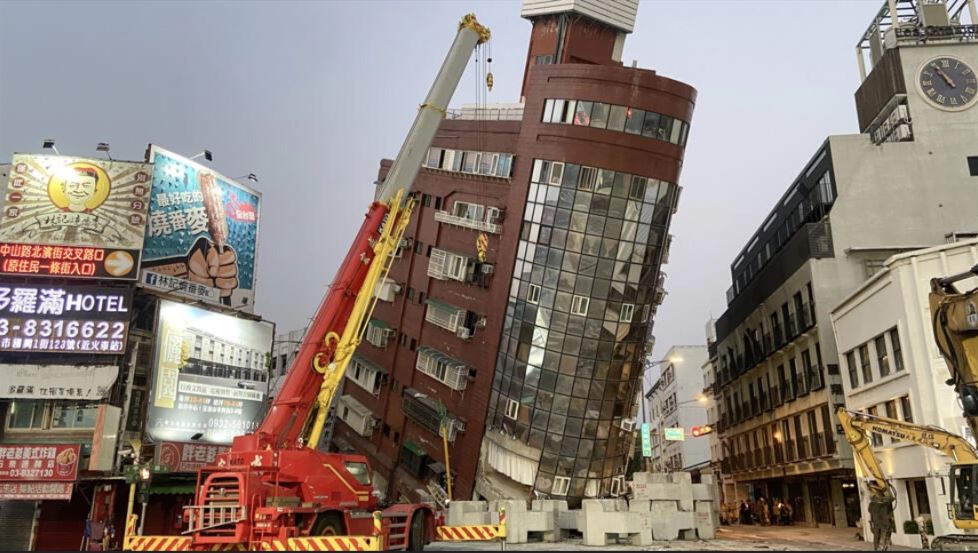The powerful earthquake that hit Taiwan in the wee hours of 3 April off its eastern coast was the strongest to shake the island in 25 years.
Up until Friday morning, the national disaster agency said at least 10 people were killed and 1,099 injured in the temblor, while more than 700 people are reported trapped and 18 missing.
Among the trapped or stranded, almost all are guests and staff of a remote hotel who cannot leave because of damaged roads, but authorities said they were safe and had food and water.
Locals described severe to violent ground shaking, which made standing and driving difficult.
Numerous video clips show lights swaying, glasses and plates crashing to the floor, and rocks raining down on cars traveling through the Taroko National Park in Hualien County, the epicenter.
A survivor recounted rocks “fell like bullets” around the coal mine he was working at, and the workers “had nowhere to escape to, everyone ran beside the sandbags for cover.”
Many people were moved by the scene in which a hospital CCTV camera in Taipei captured the moment four nurses rushed to protect newborn babies as the quake struck.
The tremors were even felt in Hong Kong, Shanghai, Zhejiang in China (at distances as far as 700 kilometers away), and also some islands of Okinawa, Japan.
The temblor triggered small tsunamis reaching nearby islands in Japan’s southwest.
A former director of Taiwan’s Central Weather Administration Seismological Center described Wednesday’s quake as having an energy equivalent to around 32 atomic bombs dropped on Hiroshima, Japan, while the Jiji earthquake in 1999, which caused 2,417 deaths in Taiwan, had the energy of 46 Hiroshima bombs.
Like the Philippines and Japan, Taiwan is prone to earthquakes as it lies along the Pacific Ring of Fire, where 90 percent of the world’s earthquakes take place.
Similar to the Noto earthquake that happened in Japan in January, the Taiwan quake rupture occurred on a reverse fault, as well.
According to the US Geological Survey, Taiwan is located in a region of complex tectonics near the intersection of three major tectonic plates — the Philippine Sea plate to the east and southeast, the Eurasia plate to the north and west, and the Sunda plate to the southwest.
Assistant Professor Luca Dal Zilio at Nanyang Technological University in Singapore told The Straits Times that the eastern Longitudinal Valley fault near Hualien is one of the possible sites that triggered the 3 April quake.

The two plates compressed and converged along a reverse fault, such that one part of the earth’s crust is pushed up and over another part.
Statistics indicate that a total of 487 aftershocks have hit Taiwan in 48 hours after the quake.
Among them, two powerful aftershocks of magnitude 6.5 and 6.2 struck at 8:11 a.m. and 10:14 a.m. on Wednesday.
The Straits Times quotes geologist Aron Meltzner saying that, based on average global statistics, about 5 percent of earthquake “mainshocks” are followed by something bigger.
Nonetheless, it is impossible for now to know in advance which “mainshocks” will eventually become a “foreshock” to something even larger.
On the other hand, Taiwanese donated ¥20 billion and ¥2.5 billion, around P7.5 billion and P936 million, respectively after the 2011 Tohoku earthquake and the 2024 Noto earthquake hit Japan.
As a result, local governments and businesses in Japan have also started fundraisers to “return the favor” to Taiwanese people.
